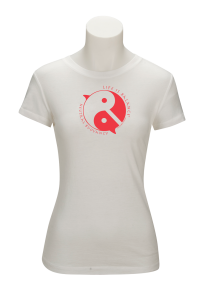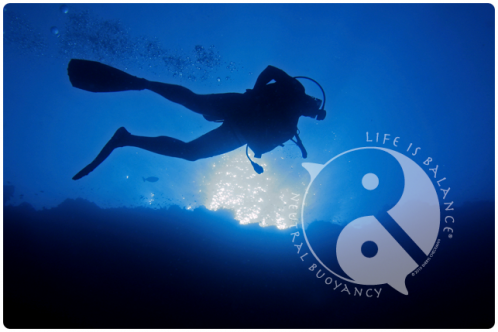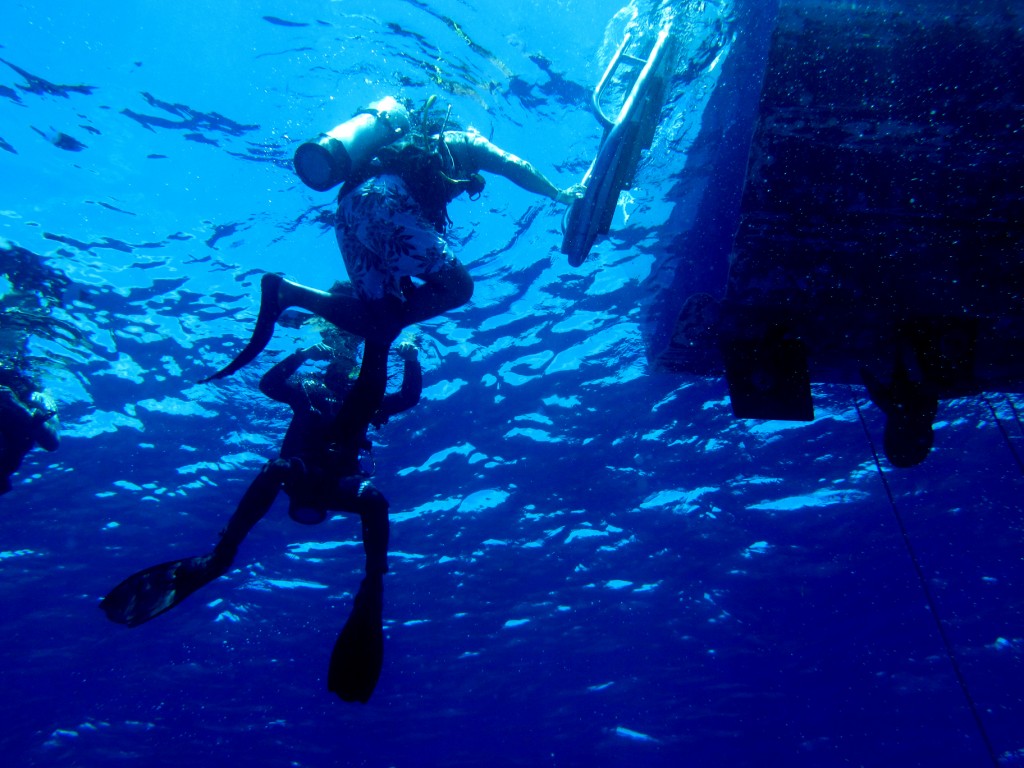I was reading the class notes in my Cornell alumni magazine the other day and I noticed a recurring theme in everyone’s updates. In addition to updates as to where they were living, news of their families and what they were doing for work, almost everyone mentioned what they did for fun. They were either playing lots of golf, hiking or biking, skiing or playing tennis, or other sport and recreational stress relievers. Everyone had a way to balance out their lives with some fun sport or exercise routine.
So I have decided to focus a series of blog posts, each to explore a different sport or activity. Today’s post focuses on one of my favs — scuba diving! The term, SCUBA, standing for self contained underwater breathing apparatus, was coined by Christian J. Lambertsen in 1952. In 1939, he invented a revolutionary underwater breathing system used by the military in World War II. He passed away on February 19 at the age of 93.
I’ve been a scuba diver since the early 1990’s. I first learned to dive a Club Med in Cancun. I took their week long Club Med leardn to scuba course. At the end of the week I was Club Med certified. This did not mean that I could go anywhere and dive. I could only dive at other Club Med resorts. In order to be able to go diving anywhere, you must have a certification card (called a C-Card) from a recognized scuba organization such as PADI (Professional Association of Diving Instructors) or Naui (National Association of Underwater Instructors) and SSI (Scuba Schools International), BSAC (British Sub Aqua Club) and CMAS (Confédération Mondiale des Activités Subaquatiques/The World Underwater Federation) to name a few of the more well known organizations.
If you have a C-Card that means that you have completed at least the most basic training needed to scuba dive. This usually involves some classroom and book work where you will learn the basics of diving physics, physiology and chemistry, as well as sessions in a pool where you will learn the motor skills and proper use of scuba equipment and the fine balance of neutral buoyancy — the seemingly weightless state in which you maintain your body in the water by controlling your breathing and the amount of air in your BC, or buoyancy compensator. In addition, there are open water dives required where you put all that you have learned into a real world test. And, finally there is a written exam to test what you have learned both in the classroom and the reading material. Once you pass both the written and open water exams, you will be given a C-card. This is your passport to dive! Without it, no reputable dive shop will rent you air or allow you to dive with them. There are many of advanced levels of certification that you can get after completing your basic, or Open Water level One course. Check with your local dive shop to sign up for a certification class. You can complete all all the course work and open water dives with your local dive shop, or if you’d prefer warmer water, you can ask for a referral letter which will allow you to do your open water dives at your next tropical vacation destination.
I found an article on learning to scuba dive that goes into more detail on finding the right Open Water course.
Here are some helpful links for dive shops and other useful information for scuba divers in the NYC area:
Scuba Network (Equipment sales & lessons)
Pan Aqua (Equipment sales & lessons)
Adventure Scuba (Equipment sales & lessons)
Empire Divers (Equipment sales & lessons)
Village Divers (Equipment sales & lessons)
Leisure Pro(Equipment sales)
Ocean Blue Divers (Dive Club)
NYUPS (New York Underwater Photographic Society)

"Neutral Buoyancy," the body position that every diver strives to attain is the tag line for this Life is Balance t-shirt.
Now that you’ve gotten certified, lets go diving! If you’re like me, the warm clear waters of the Caribbean or South Pacific might be calling to you. There is nothing like the feeling of descending into the blue to become one with the ocean’s vast environment. I guarantee that once you are underwater, any thoughts of work or stress will disappear! Swim along side a sea turtle until he leaves you behind to dive deeper or surface for air. Come face to face with a gray reef shark cruising the reef, or watch a giant grouper sit open mouthed in a cleaning station. Or look closely and you might see a tiny juvenile drum fish, no bigger than the nail on your pinky, flutter about in a coral crevice. Each dive is different, awe-inspiring in its’ own unique way. And each will leave you wanting more. You’ll surface from your dives, share sightings with your dive buddies and fill your dive logs with lots of memories. Of course, not that you’re a scuba diver, you’ll want to show off your enthusiasm by wearing a scuba t-shirt. You can find some unique scuba designs for men, women and children at Wear My Dive Art! and make sure to sign up for our RSS, join our mailing list or bookmark Life is Balance® to be the first to know when our very own scuba design for men and women will be available for purchase!
Some of the dive destinations in the Caribbean that I’ve visited over the years include:
The Turks and Caicos Islands, The Cayman Islands, Bonaire, Curacao, Tobago, Roatan, Cozumel and The British Virgin Islands, to name a few.
There are so many dive destinations around the world and while I’ve been to many in the Caribbean and have had the privilege to dive the magnificent dive sites in The Red Sea, my bucket list had many more to yet be checked off, including Fiji, Bali, Palau & Truk Lagoon, The Maldives and The Seychelles, Australia and the Great Barrier Reef.
Where do you dream of going? I’d love to hear about your favorite dive spots or what destinations are on your wish list.




